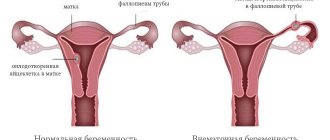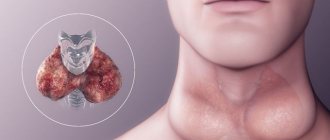Bronchial asthma is one of the most common chronic diseases of the respiratory tract, characterized by inflammation, manifested by paroxysmal shortness of breath and suffocation.
Recently, it is diagnosed more often than ten years ago. The reason for the frequent detection of such a pathological condition is not only the improvement of diagnostic methods.
state of the ecological environment every year . And more and more adults are turning to doctors for help diagnosing and treating asthma.
Main groups of drugs for the treatment of asthma
Drugs used to treat asthma are divided into:
- Basic: a group of medications used throughout the patient’s life, regardless of the frequency of attacks and the general condition of the person. If the dosage and regimen are followed, basic medications significantly reduce the frequency of attacks.
- Symptomatic: necessary to alleviate the condition during attacks. A group of drugs is used in emergency cases and as a preventive measure to prevent relapse of attacks.
Contrary to erroneous belief, basic medications continue to be taken even with significant improvements in the patient’s condition. Sudden withdrawal of this group of drugs can lead to the development of severe attacks.
https://www.youtube.com/watch?v=en6UsKgx9R8
Taking into account statistical data, we can say that every fourth case of severe attacks of bronchial asthma is provoked by spontaneous cessation of drug therapy involving the main group of drugs.
Symptoms of the disease
Early signs of bronchial asthma in adult patients:
Shortness of breath and attacks of suffocation, which can occur unexpectedly, both during sleep and after physical effort, or as a result of the penetration of dirty air, tobacco smoke, when the temperature changes, etc. The main sign of the occurrence of episodes is their sudden nature.
Cough is a typical manifestation of asthma in adults; it is hacking and dry in nature and is usually accompanied by shortness of breath. At the same time, the patient tries to cough up phlegm, but nothing works. At the end of the attack, the cough takes on a wet form, and scanty mucus is released.
Frequent shallow inhalations and prolonged exhalations. During an asthma attack, inhalations become difficult, and it is impossible to make a normal exhalation, which becomes prolonged and requires a certain load to perform it.
Hoarse breathing accompanied by dry whistles. Sometimes such noises can be heard even at a distance from the patient. With ascultation, these signs become even more pronounced.
The characteristic position of the patient during an asthma attack, which in medicine is called orthopnea. The patient assumes a sitting position, lowers his legs, holding the support firmly with his hands. This blocking of the muscles of the limbs makes it possible to inhale with minimal effort from the chest.
In addition, bronchial asthma in adult patients may have auxiliary signs and symptoms:
Important to know: Medicines for bronchial asthma
Poor health, fatigue, drowsiness
Active movements during an attack are not available to the patient, since the load increases respiratory failure. Outside of attacks, the patient's endurance to physical activity is not impaired.
Cyanosis (blue discoloration of the skin)
Cyanosis is caused by respiratory failure and characterizes the severe stage of the asthmatic syndrome.
Heart rhythm disturbance
The number of heart contractions increases to 130 beats per minute. Outside of attacks, as well as with moderate severity of the pathology, the patient experiences moderate tachycardia with a heart rate of up to 90 beats per minute.
Deformation and thickening of the distal phalanges of the fingers
In itself, deformation of the phalanges of the fingers does not pose a threat to health, but it is a clear indicator of a disease of the respiratory system.
Symptoms of pulmonary emphysema that are characteristic of long-term asthma
In this case, the patient exhibits enlargement and expansion of the chest, bulging of the clavicular areas, and weakened breathing when listening.
Symptoms of cor pulmonale
These signs characterize severe asthma with pulmonary hypertension, in which there is an enlargement of the heart on the right side.
Headaches and dizziness
These symptoms accompany respiratory failure.
Definition of disease
Bronchial asthma is a disease characterized by periodic narrowing of the airways. It causes shortness of breath and wheezing. Asthma can develop at any age, but 50% of cases are diagnosed in children under 10 years of age, and more in the male half of humanity. Basically, asthma runs in families.
The disease occurs for 3 reasons:
- Allergen entering the body;
- Penetration of infection into the respiratory tract;
- Psychosomatic reaction to a life situation.
The mechanism of occurrence of attacks is the same: under the influence of unfavorable factors, the trachea and bronchi spasm, swell, mucus production increases, the respiratory passage narrows and it becomes difficult for a person to breathe. A characteristic feature of an attack is difficulty in exhaling. Drugs prevent or stop (eliminate) the manifestations of the disease.
Genetic predisposition and psychosomatics also matter as a response to stressful situations. Under the influence of negative factors, obstruction occurs, the release of a large volume of viscous hypersecretion, which leads to respiratory failure.
Basic
The basic remedies with which it is recommended to treat bronchial asthma are usually used daily by patients. They are intended to relieve and prevent asthmatic attacks. As a result of prescribing basic therapy, the patient experiences significant relief of symptoms.
Basic drugs for the treatment of bronchial asthma can neutralize inflammatory processes in the bronchial system, reduce swelling, as well as allergy symptoms. This group includes antihistamines, corticosteroids, antileukotriene drugs, bronchodilators, and inhalers. In rare cases, long-acting theophyllines, as well as cromones (non-hormonal drugs), may be prescribed for adult patients. However, cromones and antileukotrienes are recommended to be used with caution in children, as there is a possibility of side effects.
This group includes:
- Beclazone, Salbutamol (inhalers);
- Budesonide, Pulmicort;
- Tailed, Aldecin;
- Intal, Berotek;
- Ingacort, Bekotid.
Non-hormonal
These include:
- Singular, Serevent;
- Oxis, Formoterol;
- Salmeter, Foradil.
Cromony
The classification of this group involves the use of drugs based on cromonic acid:
- Nedocromil, Ketoprofen;
- Sodium cromoglycate, Ketotifen;
- Undercut Sodium, Intal;
- Cromohexal, Tailed, Cromolyn.
These drugs are used to relieve inflammatory processes. In addition, they have an anti-asthmatic effect, slowing down the production of mast cells, which provoke inflammation and reduce the diameter of the bronchi.
Cromones are used in basic therapy, but they are not recommended to treat an asthma attack during an exacerbation, nor are they prescribed to children under 6 years of age.
Antileukotriene
Antileukotriene drugs relieve bronchospasm during the inflammatory process.
These include:
- Montelukast;
- Salmeterol;
- Zafirlukast;
- Formoterol.
Antileukotriene drugs are used as adjunctive therapy for bronchial asthma. In addition, they are approved for stopping seizures in children.
Anticholinergics
Used to relieve an asthma attack. The most commonly used:
- Atropine sulfate;
- Quaternary ammonium (non-adsorbable).
These drugs can cause many complications, so they are used quite rarely in basic therapy in the treatment of children.
Taking these medications when treating asthmatic diseases is allowed only in extreme cases.
Systemic glucocorticoids include:
- Dexamethasone;
- Prednisolone, etc.
Long-term treatment with glucocorticosteroids (especially children) is not recommended. This can lead to diabetes, hypertension, cataracts, etc. In childhood they are used only as a last resort.
Drugs in this group are actively used to relieve asthma attacks.
Combined beta-2 adrenergic agonists include:
- Seretide, Salbutamol;
- Formoterol, Ventolin;
- Salmeterol, Foradil;
- Symbicort, etc.
Some of these drugs have a prolonged effect, but without exception, all combined drugs neutralize bronchospasms and relieve acute inflammatory processes. Modern principles of therapy for bronchial asthma consider combination drugs to be the basis of treatment for exacerbations.
Expectorants
Expectorants are prescribed during exacerbation of the disease, since in almost all patients the bronchial tract is blocked by viscous, thick contents that interfere with normal respiratory activity. This is due to increased mucus formation with minimal removal from the bronchi. You can forcefully remove phlegm using expectorants.
The most commonly used expectorants are:
- Acetylcysteine (commercial names - ACC, Mucomist);
- Mercaptoethane sulfonate (Mmistabron);
- Ambroxol (Ambrosan, Ambroxol, Lazolvan);
- Bromhexine (Bizolvon, Solvin);
- Alkaline mixture with sodium bicarbonate;
- Carboxymethylcysteine (Mucopront, Mucodin, Carbocysteine);
- Potassium iodide.
Expectorants are usually prescribed to accelerate the removal of mucus from the bronchi. It must be taken into account that the existing opinion that cough medicines and expectorants have identical pharmacological effects is erroneous. Treatment of cough involves, first of all, the use of anti-asthma treatment.
Relieving asthmatic attacks using inhalation is the most effective method of treatment, since all the necessary medications instantly enter the respiratory system. This is very important, since during attacks the fastest possible medical intervention is required, and inhalers are most often used during exacerbation of asthma. Between periods of exacerbation, treatment can be done using other means: tablets, syrups, injections.
Inhalers with glucocorticosteroids provide effective assistance, having a positive effect and reducing swelling of the mucous membranes with the help of Adrenaline.
These include:
- Flixotide, Budesonide;
- Becotide, Flunisolide;
- Fluticasone, Beclomethasone;
- Benacort, Ingacort, Beclomet, etc.
Glucocorticosteroid drugs for inhalation are actively used to relieve acute asthmatic asthma attacks. This dosage form allows you to minimize the dosage without loss of effectiveness.
Today, asthmatic children under 3 years of age can be treated with inhalations, subject to careful adherence to the dosage and medical supervision. If these conditions are met, the possibility of side effects is minimal.
Causes of the disease
There are many reasons why the sensitivity of the bronchi increases, some of them are concomitant factors that support the inflammatory process.
Others act as direct pathogens that provoke an asthma attack. The etiology of the disease may be associated with the individual characteristics of the body:
Heredity There is a high probability that a child of parents with asthma will also have this diagnosis in the future.
The cause of hereditary aggravation is observed in 30% of patients with asthmatic syndrome, and it can manifest itself at any age.
Working in hazardous production Signs of bronchial asthma manifest themselves in adult patients who systematically interact with hazardous production components, breathe air of high or low temperature, chemical impurities and fumes.
Infectious pathologies and chronic bronchitis In which inflammation of the bronchial mucosa is noted. These pathologies provoke the reactivity of bronchial smooth muscles to an irritant. Therefore, long-term bronchitis in adult patients with symptoms of bronchial obstruction sometimes develops into bronchial asthma.
Unfavorable climatic and environmental conditions For example, residents of rural areas, as well as areas with dry air, suffer from asthma less often than residents of northern cities.
Tobacco smoke provokes inflammatory deformation of the mucous surface of the bronchial system, so people who smoke often suffer from chronic bronchitis. In many of them, the chronic form of bronchitis develops into bronchial asthma.
Room dust Provides a favorable environment for the appearance of dust mites. In addition, house dust contains a huge amount of particles of epithelium, epidermis, wool and chemical components, which also provoke the development of bronchial asthma.
Medicines Most often non-steroidal anti-inflammatory drugs, which can cause illness due to long-term use.
Basic drugs
The basic category of medicines includes several groups of medicines, which include:
- non-hormonal antiallergic drugs or cromones;
- inhaled glucocorticosteroid (hormonal) agents;
- glucocorticosteroid drugs in tablets;
- leukotriene antagonists.
These medications are used in combination for a permanent effect on the human body.
Non-hormonal drugs are more harmless than glucocorticosteroid analogues, but their effect may be significantly weaker.
The Cromon group includes:
- Tailed - the active substance nedocromil sodium;
- Intal is the active substance sodium cromoglycate.
The drugs are used for intermittent and mild forms of bronchial asthma. The regimen consists of two breaths from 4 to 8 times a day; with significant improvements, the doctor can reduce the number of medications used to two breaths 2 times a day.
Intal is contraindicated for use in cases of use of Ambroxolom and Bromhexin, while Tailed should not be taken by children under 12 years of age.
Basic therapy for bronchial asthma
Its initial goal is to reduce or, if possible, completely eliminate the symptoms of the disease as soon as possible, ensuring a comfortable and active life for the patient as much as possible. Inhaled glucocorticoids are considered the best means for basic treatment. They help achieve better local action while avoiding the side effects that systemic types of these drugs usually cause. Systemic glucocorticoids are prescribed only in cases of severe symptoms, for a short period.
If the use of established doses of inhaled drugs does not give the desired result, it is possible to prescribe beta-2 agonists together with bronchodilators. Cromones can also be prescribed, which significantly reduce the symptoms of inflammation. They are used for mild illness. Leukotriene modifiers are widely used to prevent bronchospasm.
Bronchial asthma, the symptoms and treatment of which may vary in adults, can be treated if the therapy is selected correctly and the patient follows all instructions.
Symptomatic treatment
In addition to basic treatment measures, in case of exacerbation, it is necessary to take medications to eliminate the accompanying symptoms of the pathology - bronchodilators. Bronchodilators are drugs that help increase the lumens in the bronchi and alleviate the condition during attacks.
Drugs that have the ability to have a long-term effect when expanding the lumens in the bronchi are called β-adrenergic agonists.
The group includes the following drugs:
- containing the active substance formoterol: Oxis, Athymos, Foradil;
- containing the active substance salmeterol: Serevent, Salmeter.
The drugs are used strictly according to the instructions.
Beta-2-adrenergic agonists are aerosol drugs that begin to act against signs of suffocation 5 minutes after use. The drugs are produced in the form of aerosols, but for more effective treatment, experts recommend using an inhalation device - a nebulizer to eliminate the shortcomings of the main technique associated with the sedimentation of up to 40% of the drug in the nasal cavity.
Medicines used for bronchial asthma:
- containing the active substance fenoterol: Berotek, Berotek N;
- Salbutamol;
- Ventolin;
- containing the active substance terbutaline: Bricanil, Ironil SEDICO.
A group of medications is used when basic therapy is insufficient to quickly eliminate attacks.
In case of intolerance to beta-2-agonists, it is possible to use anticholinergics, an example of which is the drug Atrovent. Atrovent is also used in combination with the β2-adrenergic agonist Berotec.
The group of xanthines are drugs for asthma, widely used since the beginning of the 20th century.
To treat severe asthma attacks when basic drugs are ineffective, the following are used:
- Theophylline (Teopec, Theotard, Ventax);
- Eufillin;
- Theophylline and Ethylenediamine (Aminophylline);
- Bamifillin and Elixofellin.
Medicines containing xanthines act on the muscles lining the airways, leading to relaxation and stopping the attack.
Anticholinergics
Anticholinergics are a group of drugs that help relax smooth muscle tissue structures during coughing attacks. Medicines also relax the muscles of the intestines and other organ systems, which allows them to be used in the treatment of many serious diseases.
Medicines have a number of contraindications and side effects, which is why their prescription is determined only by the attending physician.
To eliminate stagnation of mucus, restore breathing and reduce the severity of shortness of breath, mucolytic agents are used:
- Lazolvan;
- Ambrobene;
- Ambroxol;
- Mukolwan.
The products are available in different forms, including injections.
In case of exacerbation of bronchial asthma due to the development of a viral or bacterial infection, the use of antiviral, antibacterial and antipyretic drugs is also necessary, but the use of penicillins or sulfonamides is prohibited for asthmatics.
To combat infection, patients with bronchial asthma should use the following antibiotics:
- cephalosporins;
- macrolides;
- fluoroquinolones.
Taking any additional medication should be discussed in a timely manner with your doctor.
Signs of asthma can develop gradually, so the person who is sick may not notice them at first until the first asthma attack. Thus, contact with an allergen or a respiratory infection can cause initial symptoms, such as:
- wheezing;
- Painless tightness in the chest;
- Difficulty breathing out;
- Dry persistent cough;
- Feeling of panic;
- Sweating.
These symptoms worsen sharply at night and in the early morning hours.
In severe asthma, the following symptoms develop:
- Wheezing becomes inaudible because too little air is moving through the airways.
- The patient cannot complete a sentence due to shortness of breath;
- Lips, tongue, fingers and toes turn blue due to lack of oxygen;
- Confusion and coma.
Complications of bronchial asthma
They become the result of a prolonged course of the disease without treatment or if the therapy is chosen incorrectly. Also, their occurrence may be associated with a violation of medication or self-medication. Negative manifestations of this pathology can be expressed in the form of acute or chronic respiratory, metabolic, cardiac, gastrointestinal, cerebral and other complications.
Acute breathing complications can be expressed in the form of several diseases:
- Asthmatic status. It is characterized as an attack of asphyxia, characterized by its severity and duration. During it, swelling of the bronchioles and the formation of a large amount of sputum are noted. All this causes suffocation, which can only be eliminated by providing the patient with emergency assistance;
- Acute respiratory failure. As a result of its appearance, almost no oxygen gets into the lungs. In such situations, dilation of the bronchi with the help of drugs and ventilation is required;
- Spontaneous pneumothorax, which appears due to deformation of the lung tissue. It leads to a high concentration of air in the pleural cavity. The patient develops unbearable pain in the chest area. Shortness of breath in bronchial asthma in this case manifests itself more strongly than usual;
- Pneumomediastinum. This complication is characterized by the accumulation of excessive amounts of air in the mediastinal tissue. It is also expressed by painful sensations in the chest, shortness of breath and deterioration in well-being;
- Atelectasis , which results in impaired ventilation of the lungs. It is formed due to the large presence of characteristic mucus in the lungs. This pathology is accompanied by severe shortness of breath, a prolonged attack, which is not affected by conventional medications;
- Pneumonia. It is characterized by inflammation of the lung tissue.
Important!
When such complications occur, the first priority is to hospitalize the patient, and not to find out the reasons for their occurrence.
Chronic respiratory complications are much easier to tolerate than acute ones, but appear much more often. They are observed in almost all people who have had bronchial asthma for more than three years. Most often, hyperinflation of the lungs occurs, in which they expand due to excessive filling with air. It is impossible to cure this form of the disease, it is only possible to weaken its course.
Complications from the heart are manifested by a drop in blood pressure, disturbances in the heartbeat or its disappearance. In some cases, the development of a heart attack cannot be ruled out.
Complications in the gastrointestinal tract most often appear after prolonged exposure to drugs. If left untreated, the risk of intrauterine bleeding increases significantly.
Brain complications are the most severe form of pathology. As a result of changes in the quality and quantity of blood, abnormalities in the functioning of the brain occur, which lead to clouding of consciousness and memory impairment. The person becomes unbalanced or lethargic. The appearance of fainting is noted.
Other complications of this disease include prolapse of the uterus and disruption of the natural position of the rectum.
Signs of bronchial asthma (cough form) can provoke fecal and urinary incontinence due to an increase in intra-abdominal pressure during severe coughing attacks. The appearance of hernias and ruptures of internal organs is also noted.
Evaluation of the effectiveness of drug use
It is important to remember that the use of basic drugs does not lead to a complete cure for the disease. The goals of the main course of medications include:
- diagnosis and prevention of frequent attacks;
- improvement of external respiration;
- reducing the need to use a situational group of short-acting drugs.
The dosage and list of necessary medications may change throughout a person’s life based on the general condition of the patient and the recommendations of the attending physician.
When assessing the effectiveness of treatment, carried out every 3 months, changes are detected:
- patient complaints;
- frequency of doctor visits;
- frequency of emergency calls;
- daily activity;
- frequency of use of symptomatic drugs;
- external respiration conditions;
- severity of side effects after taking medications.
If the drugs are insufficiently effective or have significant side effects, the attending physician may prescribe other medications in the basic course or change the dosage. The specialist also determines compliance with the medication regimen, since if the recommendations are not followed, the therapy may be ineffective.
Bronchial asthma belongs to the category of incurable diseases. All of the listed groups of drugs are intended to improve respiratory activity and return the patient to normal functioning. If you strictly follow the doctor’s recommendations and undergo regular medical examinations, the positive dynamics will be maintained constantly.
What recommendations can be given to patients or parents of an asthmatic child?
- Asthma medications are key to proper control of the disease. The patient must always have a supply of medications.
- Contact your pharmacy or doctor's office at least two days before your supply runs out. Always have the pharmacy's phone number, drug names and dosage on hand so that you can quickly place a new order if necessary.
- Study the treatment regimen: how and when to take medications. The regimen is designed specifically to best control symptoms. You must fully understand the scheme and be able to use it.
- Wash your hands before taking medications.
- Take your time. Check the name and dosage of all medications before taking them.
- Store medications according to instructions and prescription.
- Check the condition of liquid medications frequently. If they change color or crystallize, throw them away and get new ones.
- Consult your doctor about using any other medications. Some of them may interfere with the way asthma medications work if taken at the same time.
- Any medicine, even the safest one, can have side effects. Ask your doctor or pharmacist about the side effects of the drug you are prescribed. Tell your doctor if you experience these symptoms after taking medications.
Preventing asthma exacerbations
To minimize the risk of attacks due to bronchial asthma, you need to follow these rules:
- to refuse from bad habits. It is necessary not only to give up cigarettes, but also to avoid places where they smoke;
- spend more time in the fresh air, limit time spent in areas with polluted air;
- promptly treat inflammatory and infectious diseases of the respiratory tract;
- avoid close contact with pets;
- Avoid dust and pollen from flowering plants.
If you have bronchial asthma, you must follow a diet. The diet involves the complete exclusion of foods that can provoke an attack of suffocation. It is important to remember the following:
- Salt consumption should be strictly limited. It can be no more than 8 g per day;
- it is necessary to exclude all types of nuts from the diet;
- chicken eggs, seafood and sea fish, citrus fruits, mushrooms, strawberries and raspberries are the strongest allergens, so you should avoid eating them;
- It is important to avoid foods and dishes that contain histamines and thiamine. Most of these substances are found in alcohol-containing drinks, cheese, smoked foods (especially raw smoked sausages), canned fish;
- all seasonings and spices, including natural ones (horseradish, onions, garlic), must be excluded from the menu.
Carbonated drinks, honey, coffee and chocolate also cause allergic reactions.
All industrially produced products contain large amounts of dyes and flavors that are hazardous to the health of asthmatics, so they must be avoided.
The patient’s menu may consist of fresh fruits and vegetables that need to be boiled and baked, vegetable soups and vegetarian borscht, vegetable stew, steamed meatballs, and occasionally cereal side dishes.
As for the method of cooking, patients with bronchial asthma should eat boiled, stewed and baked dishes. Fried foods should be completely avoided.
Combining several products
The correct combination of medications during the treatment of bronchial asthma is one of the most important steps towards improving the condition. Medicines affect the complex biochemical processes of the body, which is why the combination of medicines must be treated very carefully.
Therapeutic regimens to improve the general condition using a stepwise method:
- First stage: the stage at which weak attacks of an irregular nature are observed. At this stage, systemic treatment is not used, but medications of the basic complex from the group of non-hormonal aerosols are used.
- Second stage: the number of attacks is up to several per month, the course of the disease is mild. As a rule, the doctor prescribes the use of a number of drugs such as cromones and short-acting adrenergic agonists.
- Third stage: the course of the disease is characterized as moderate. Comprehensive and preventive treatment includes the use of corticosteroid drugs and dilators with prolonged properties.
- Fourth stage: due to severe manifestations of the disease, it is necessary to use a combination of several groups of drugs. Medicines, regimen and dosage are prescribed by the attending physician.
Bronchial asthma can change its course, which is why during the treatment period it is necessary to undergo regular examination by a specialist to determine the effectiveness of the drugs used and changes in the condition. If you follow the doctor's recommendations and instructions for taking medications, the treatment prognosis is most often favorable.
Atypical asthma symptoms
Each person is individual, has certain characteristics of the body, therefore, in some cases, bronchial asthma manifests itself with atypical symptoms. Based on such manifestations, it is not always possible to determine the development of such a dangerous disease. In order to promptly identify problems with the respiratory system and begin a surgical course of treatment, to eliminate dangerous complications, we recommend that you consult a doctor if you identify the following symptoms:
- Rapid breathing, without a good reason.
- Chronic fatigue, anxiety, fatigue.
- Distraction of attention.
- Chronic cough.
- Hoarse voice.
- A feeling of lack of air, provoking the desire to inhale as much oxygen as possible.
If these signs are detected, you must immediately contact a specialist and undergo a comprehensive examination. Treatment of asthma in the early stages allows you to establish normal functionality of the respiratory system, reduce the risks of exacerbations and dangerous complications of the disease.
conclusions
Bronchial asthma is an incurable chronic disease. With proper treatment, it is reduced to rare and mild manifestations. During an attack, the use of certain bronchodilators is mandatory; during systematic therapy, anti-inflammatory, bronchodilator, anti-leukotriene and new-generation combination drugs are required.
Asthma is not the only disease that is considered a life-threatening disease. There is also COPD - chronic obstructive pulmonary disease, the treatment methods for which are described here. In addition, there is tuberculosis, which is treated with chemotherapy.











